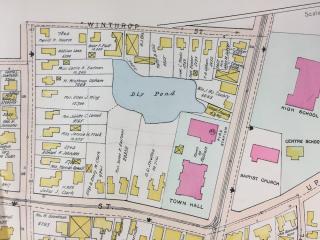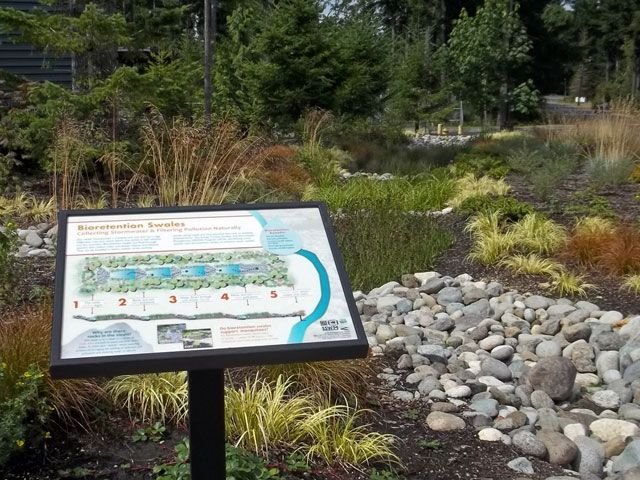Green Redesign to Stop Flooding in City Hall Lot

To celebrate the 50th anniversary of Earth Day, we are running a series of posts about a number of different projects, supervised by Sustainability Manager Martha Grover, that are making Melrose greener.
Did you know that the parking lot behind City Hall was once the site of Dix Pond? Concerns about mosquito breeding and a history of rubbish dumping led the DPW to fill the pond around 1900 and eventually it became the parking lot it is today. As a result the water table is unusually high and the parking lot regularly floods during severe rainfall and a few parking spaces are unusable due to standing water that has nowhere to go. Climate change projections for Melrose indicate that we’ll see more frequent severe precipitation events in the future so now is the time to prepare for the impact.
There are many ways to address drainage issues in parking lots but the most beneficial to the environment and to downstream water resources is through the use of green infrastructure, or a variety of rain gardens and other natural or manufactured landscape features that manage run-off and treat stormwater before it enters the watershed. Stormwater from the City Hall parking lot travels both underground and above ground via Ell Pond Brook, Spot Pond Brook, to the Malden River and finally the Mystic River and ends up in Boston Harbor.
Fortunately, Melrose was recently awarded an Action Grant in the amount of $70,313 from the Municipal Vulnerability Preparedness (MVP) program of the Massachusetts Executive Office of Energy and Environmental Affairs to design a green infrastructure solution to alleviate the flooding in the City Hall parking lot. Stantec was selected to do the design and has already been on site to survey the lot and will soon be collecting geotechnical data and hydraulic assessments. The design will be complete by the end of June and the city hopes to apply for another MVP Action Grant for the cost of construction.
The city proposes to use green infrastructure in the parking lot as an opportunity to educate residents and business owners about creative ways beyond the usual “gray infrastructure” solutions of the past to address impacts from climate change. Signs like the one shown below are one way to explain the purpose of the landscape features in the lot.

Addressing the parking lot funding has been a priority for many years. It’s was given high priority in the 2018 MVP Report, in the 2019 Natural Hazard Mitigation Plan, and most recently in the City’s FY20 Capital Improvement Program. We’re excited to finally get started on fixing it.
